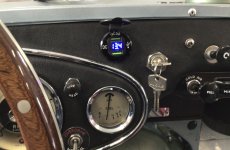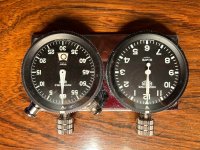Frameman 1949
Freshman Member
Offline
I tried to find any articles dealing with the issue but couldn’t find anything.
I’m going to add an ammeter to my Austin Healey 100-6. Can anyone recommend the best way to accomplish this?
Regards
Roger
I’m going to add an ammeter to my Austin Healey 100-6. Can anyone recommend the best way to accomplish this?
Regards
Roger

 Hi Guest!
Hi Guest!

 smilie in place of the real @
smilie in place of the real @
 Pretty Please - add it to our Events forum(s) and add to the calendar! >>
Pretty Please - add it to our Events forum(s) and add to the calendar! >> 



